
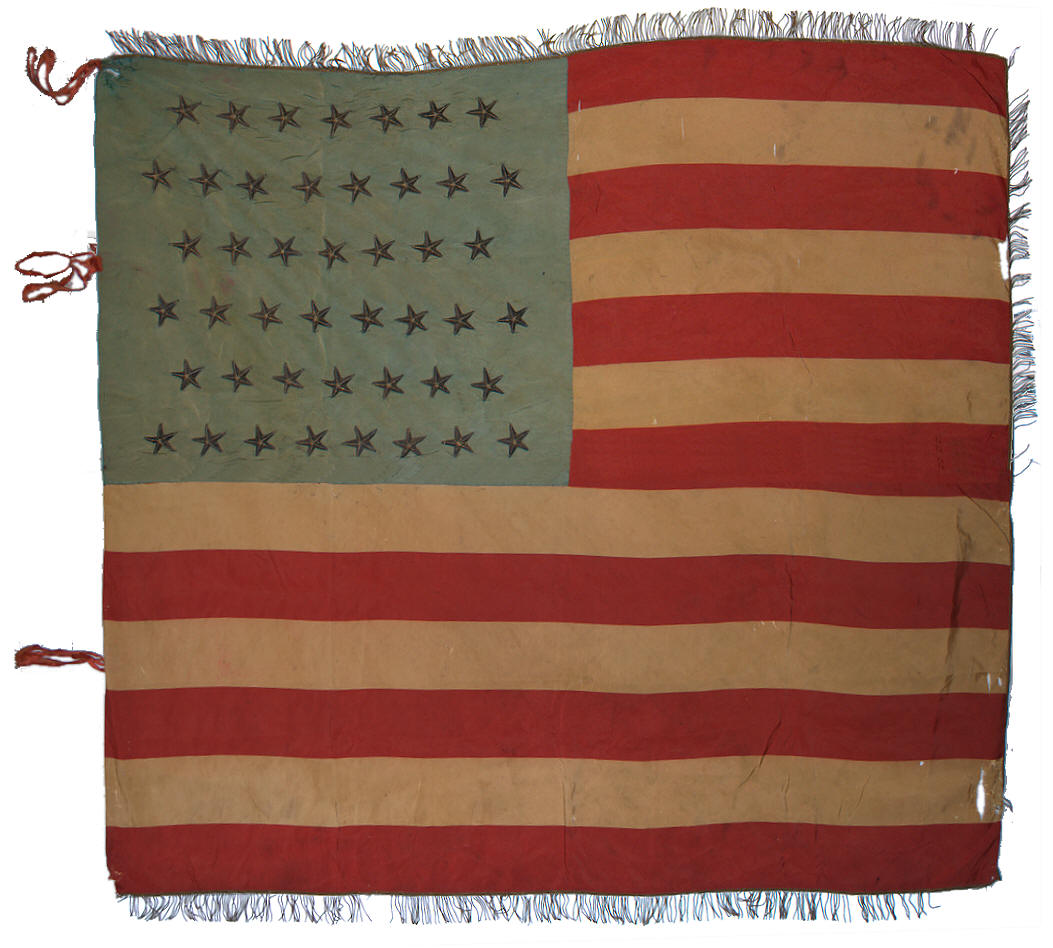 Battle
flags used by the American
military are a special
category of flags unto
themselves. Prior to
the Mexican War in the late
1840s, American military
units typically did not
carry American flags into
battle. The primary
use of flags in this early
epoch was for Navy and
maritime use. By the
1840s, Army units began to
carry the Stars and Stripes,
but surviving examples from
this era are extremely rare.
American flags for
commercial or home use
during the pre-Civil War era
was almost non-existent.
It wasn't until the Civil
War that the use of the
Stars and Stripes for
military, commercial, and
home use became mainstream
in American culture.
American battle flags in
particular, both in the
Stars and Stripes format,
and in the heraldic eagle
forms used for headquarters
flags, saw widespread use
during the Civil War, and
the practice continues to
this day. Recognizing
an American battle flag is
sometimes challenging, but
those gathered from the Rare
Flags collection and
presented here should help
you identify them. Battle
flags used by the American
military are a special
category of flags unto
themselves. Prior to
the Mexican War in the late
1840s, American military
units typically did not
carry American flags into
battle. The primary
use of flags in this early
epoch was for Navy and
maritime use. By the
1840s, Army units began to
carry the Stars and Stripes,
but surviving examples from
this era are extremely rare.
American flags for
commercial or home use
during the pre-Civil War era
was almost non-existent.
It wasn't until the Civil
War that the use of the
Stars and Stripes for
military, commercial, and
home use became mainstream
in American culture.
American battle flags in
particular, both in the
Stars and Stripes format,
and in the heraldic eagle
forms used for headquarters
flags, saw widespread use
during the Civil War, and
the practice continues to
this day. Recognizing
an American battle flag is
sometimes challenging, but
those gathered from the Rare
Flags collection and
presented here should help
you identify them.
The most common
indicators of a Army battle
flag made for use by ground forces
include:
- The presence of
fringe around the
borders of a flag
- Embroidered,
gilt-painted, or silk
sewn stars
- Hoists that consist
of the stripe or colored
material, rather than a
separate white hoist
- The presence of
ribbon-like ties or a
sleeve along the hoist
edge of the flag
- A large, nearly
square shape, which
often indicates a
regimental color
- The use of silk
fabric in the flag's
construction
|
|

|
|
 |
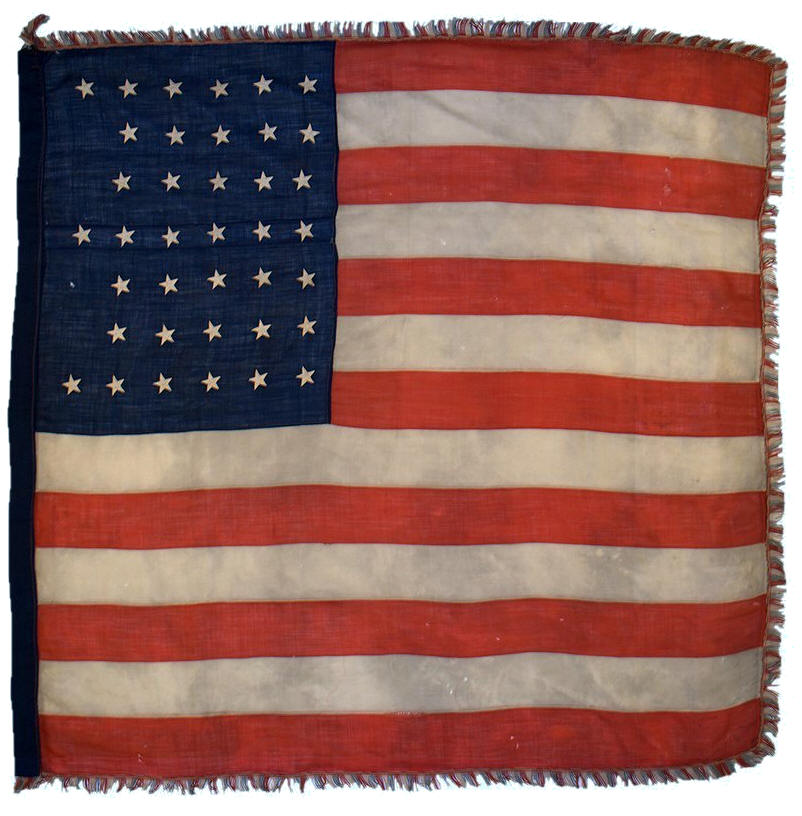 |
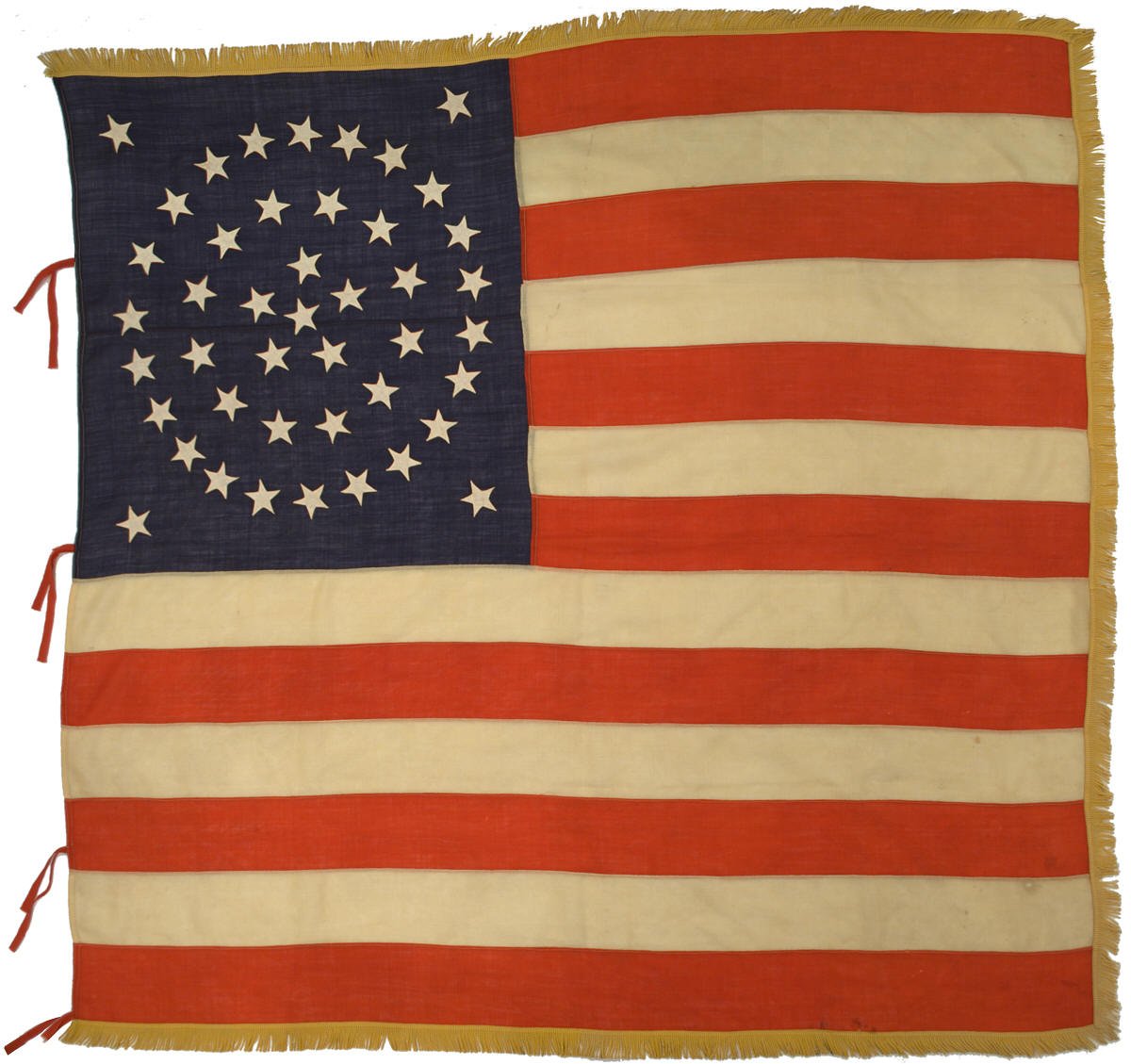 |
 |
38 Stars,
Regimental
Battle Flag
Indian Wars
Period,
Colored
Hoist,
Fringe,
Sleeve
Hoist,
Rectangular
Regulation
Size |
44 Stars,
Regimental
Battle Flag
Late Indian
Wars Period,
Stripes
to Hoist,
Fringe, Silk
Ties,
Regulation
Size |
45 Stars,
Regimental
Battle Flag,
Spanish-American
War Period,
Stripes to
Hoist,
Metallic
Bullion
Stars,
Bullion
Fringe, Silk
Ties, Silk
Fabric,
Regulation
Size |
|
 |
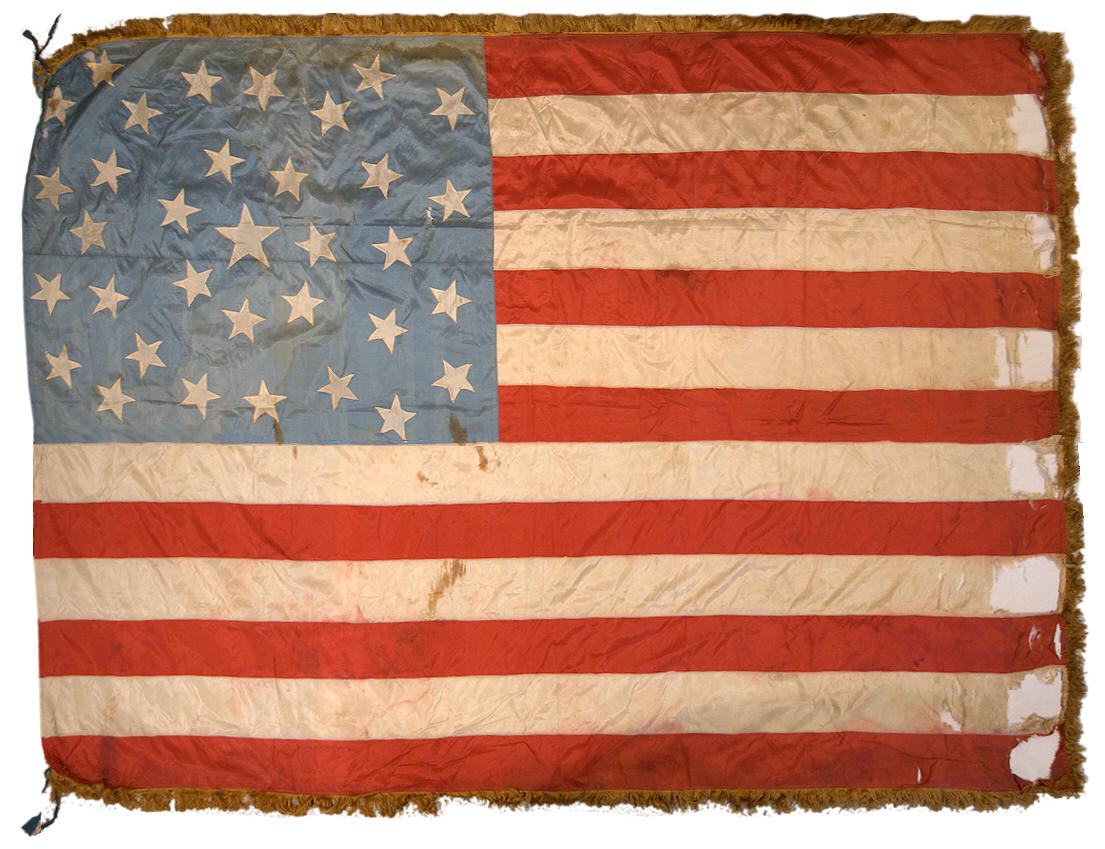 |
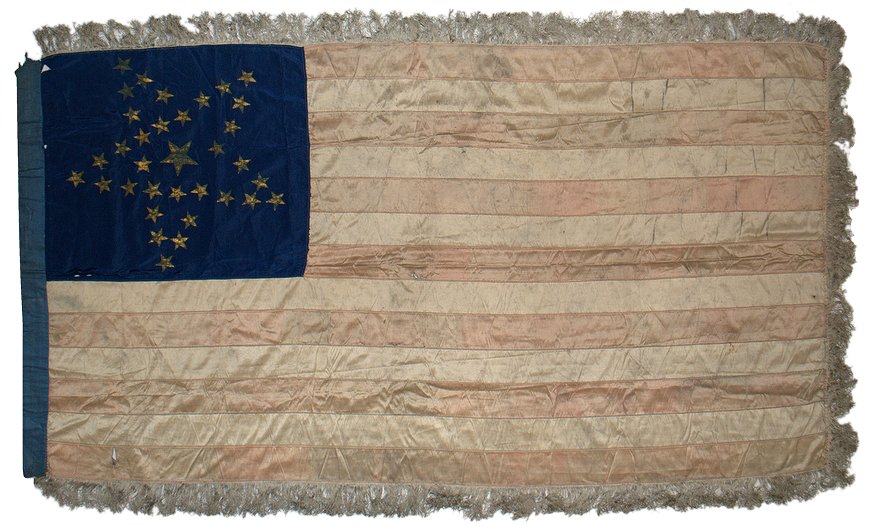 |
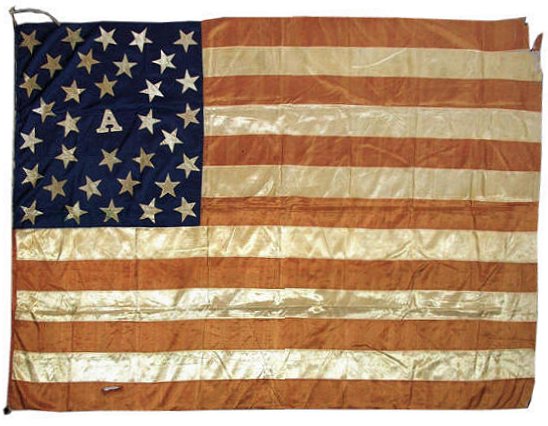 |
|
34 Stars,
Presentation
Color
Company
Battle Flag,
Civil War
Period,
Stripes to
Hoist,
Fringe,
Sleeve
Hoist, Silk
Fabric, Silk
Stars |
34 Stars,
Company
Battle Flag,
L Co. 102nd
Pennsylvania
Infantry,
Civil War
Period,
Colored
Hoist,
Fringe,
Sleeve
Hoist, Silk
Fabric, Gilt
Painted
Stars |
34 Stars,
Presentation
Color, A
Company,
16th New
York
Infantry,
Civil War
Period,
Colored
Hoist,
Sleeve
Hoist, Silk
Fabric, Silk
Stars |
| |
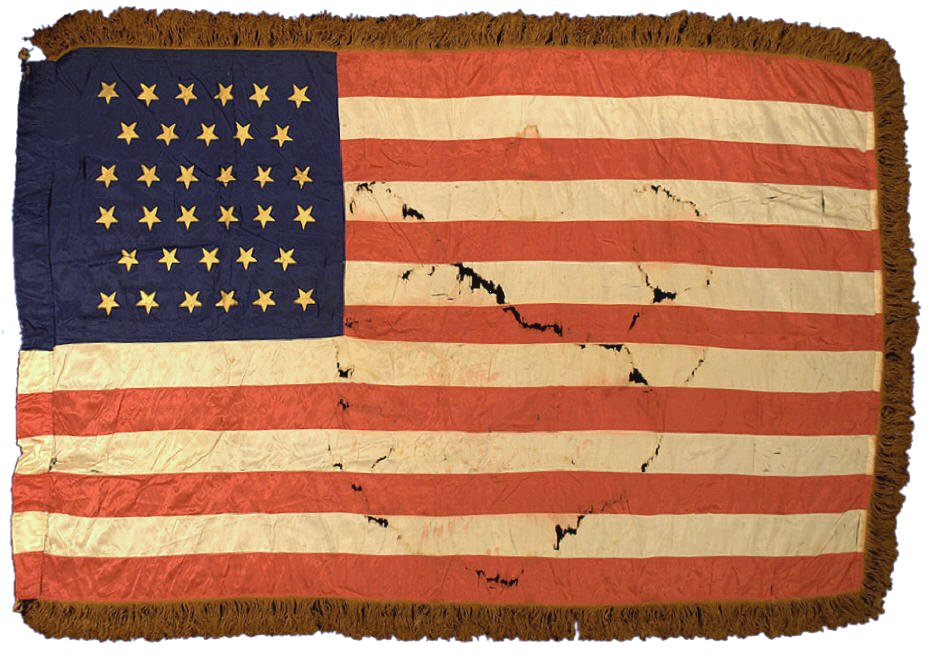 |
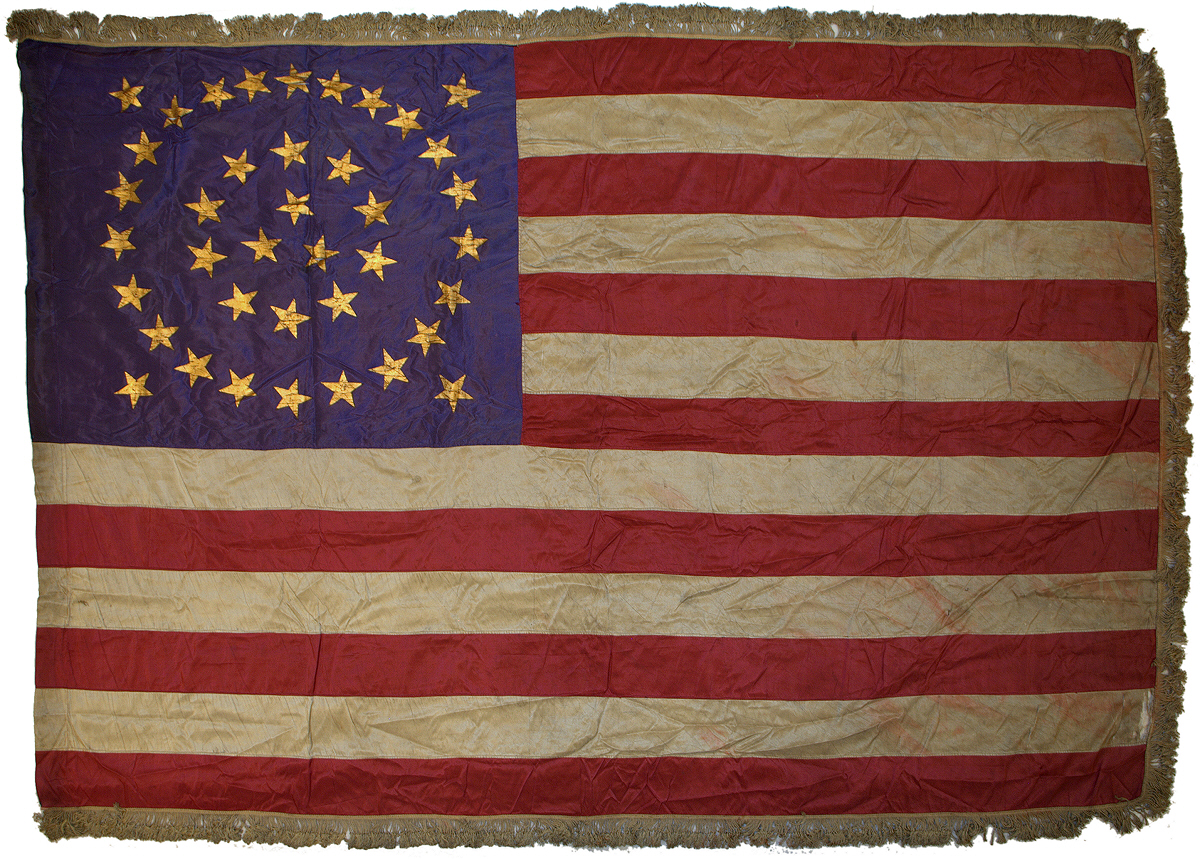 |
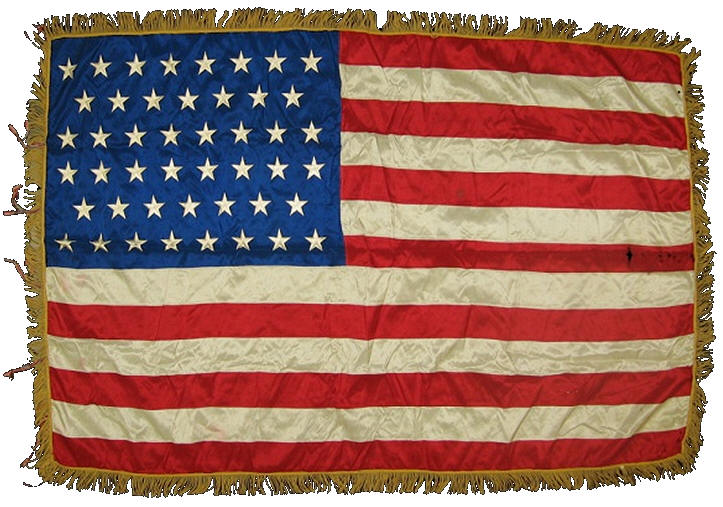 |
35 Stars,
Company
Battle Flag,
Civil War
Period,
Stripes
to Hoist,
Fringe, Silk
Fabric, Gilt
Stars |
39 Stars,
Company
Battle Flag,
Indian Wars
Period,
Stripes to
Hoist,
Fringe, Silk
Fabric,
Sleeve
Hoist, Gilt
Stars |
46 Stars,
Company
Battle Flag,
Peace Time,
Silk
Thread-Embroidered
Stars,
Fringe, Silk
Fabric, Silk
Ties |
|
 |
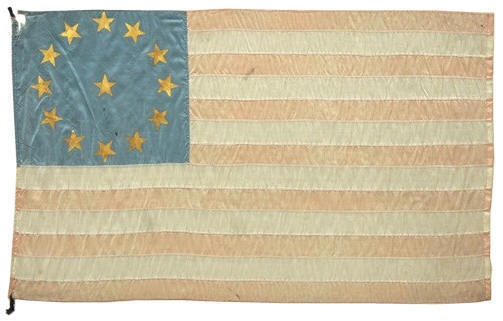 |
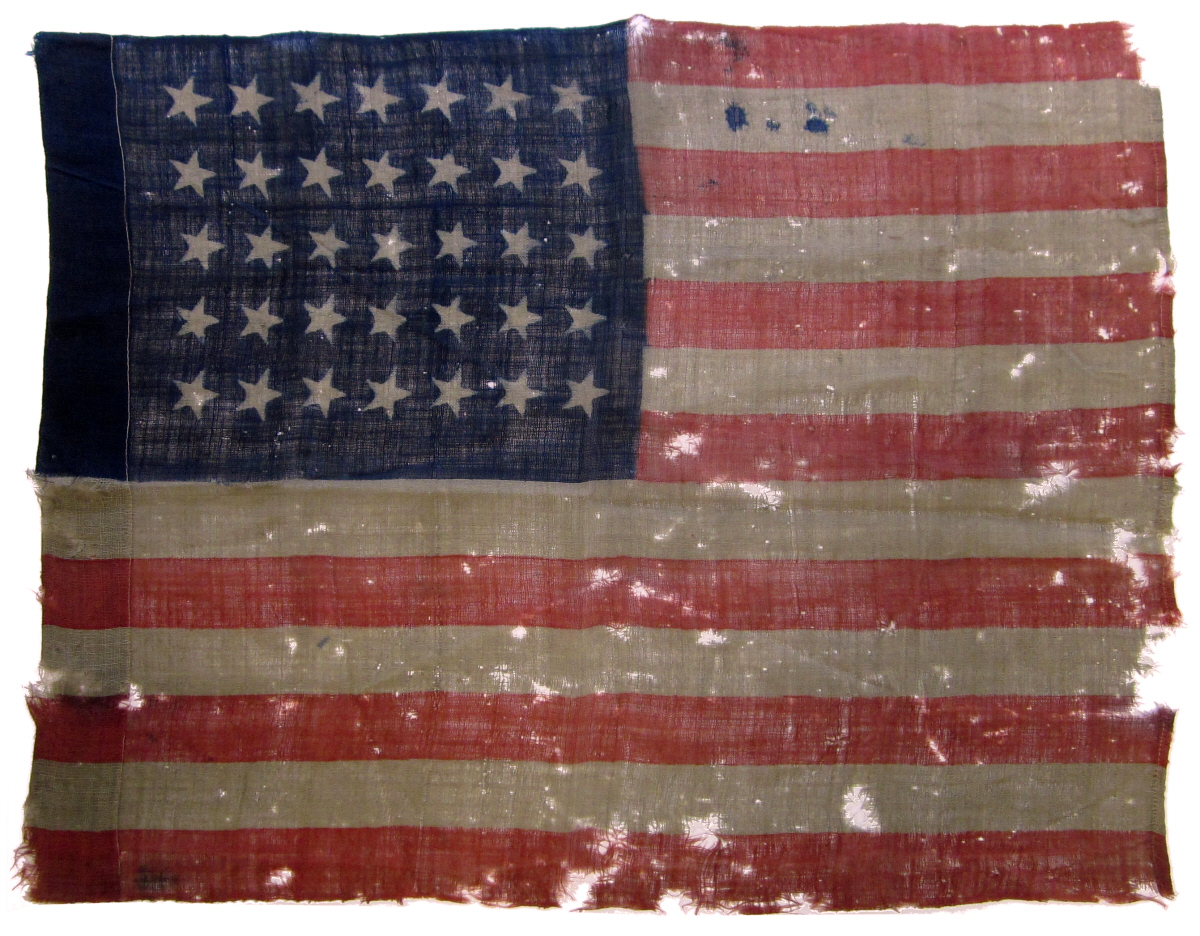 |
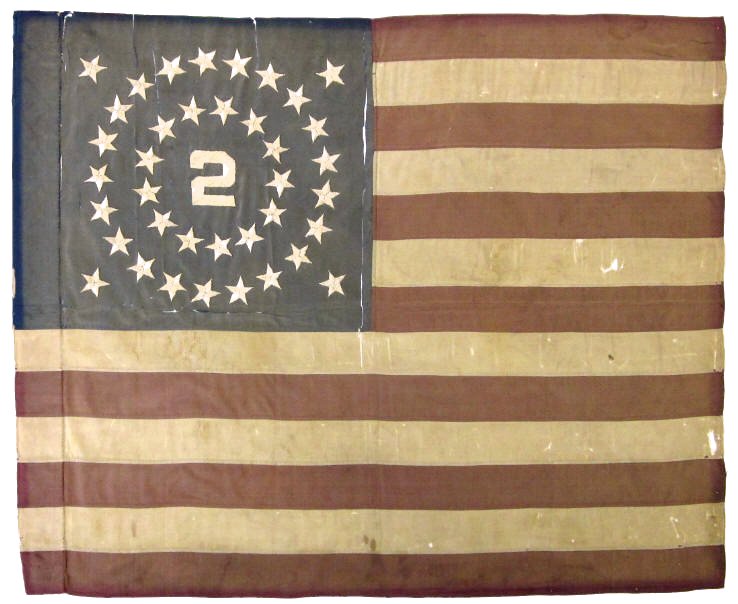 |
13
Stars,
Flank
Marker,
Civil
War
Period,
Stripes
to
Hoist,
Sleeve
Hoist,
Silk
Fabric,
Gilt
Stars |
35
Stars,
Union
Camp
Color,
Civil
War
Period,
Stripes
to
Hoist,Tacked
to
Staff,
Printed
on
Wool |
38
Stars,
US
2nd
Infantry
Regiment,
Indian
Wars
Period,
Embroidered
Stars,
Stripes
to
Hoist,
Sleeve
Hoist,
Silk
Fabric |
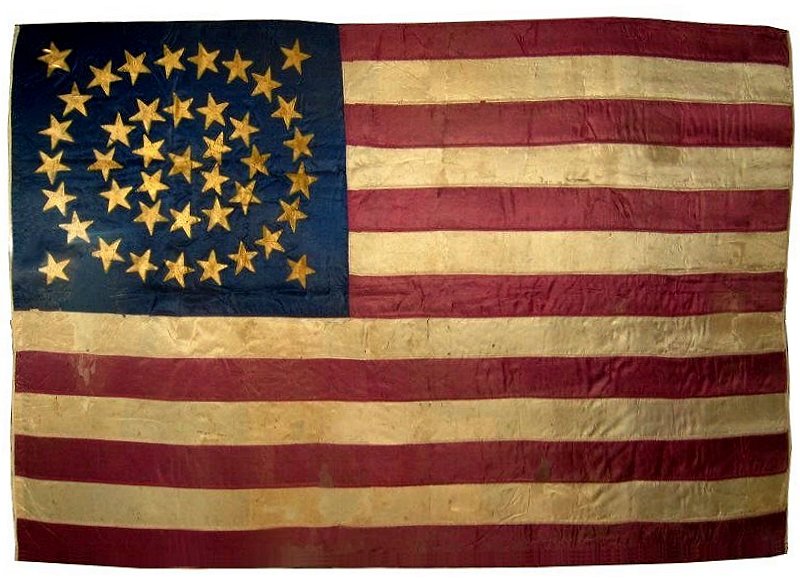 |
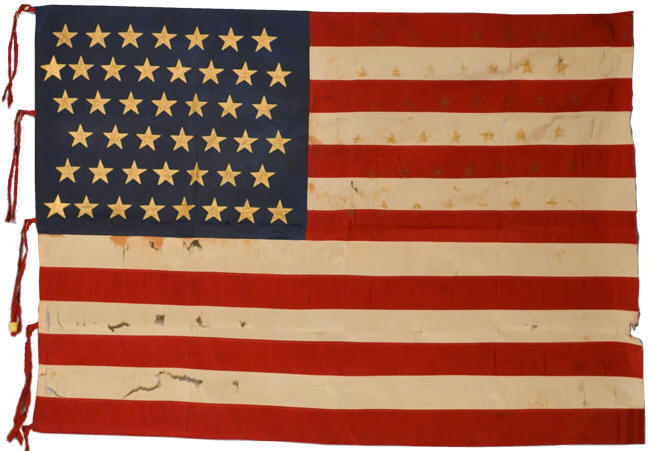 |
38
Stars,
Updated
to
42
Stars,
1876-1890
Indian
Wars
Period,
Stripes
to
Hoist,
Silk
Fabric,
Gilt
Stars |
44
Stars,
1891-1896
Stripes
to
Hoist,
Silk
Fabric,
Gilt
Stars,
Silk
Ties |
|
|
 |
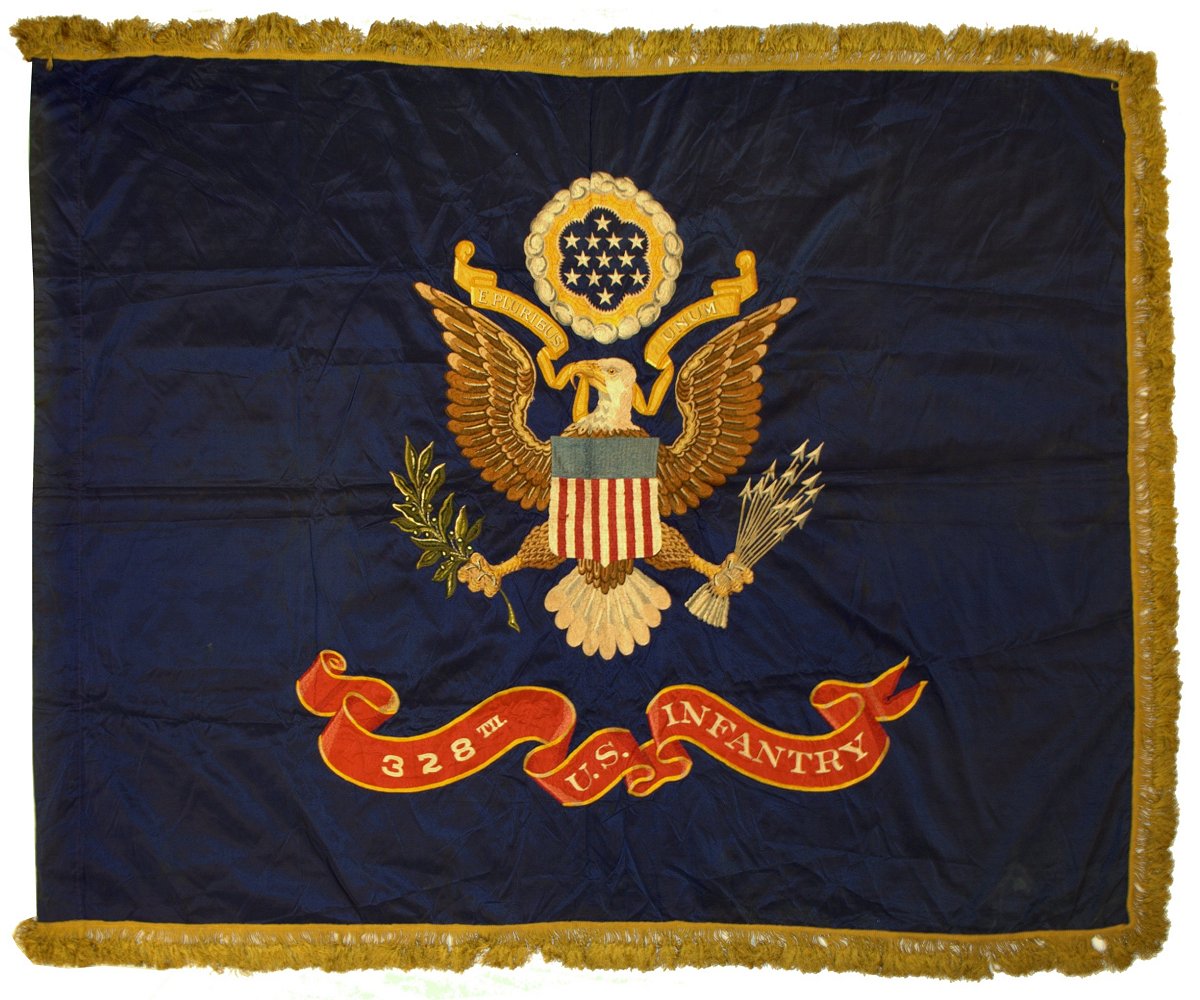 |
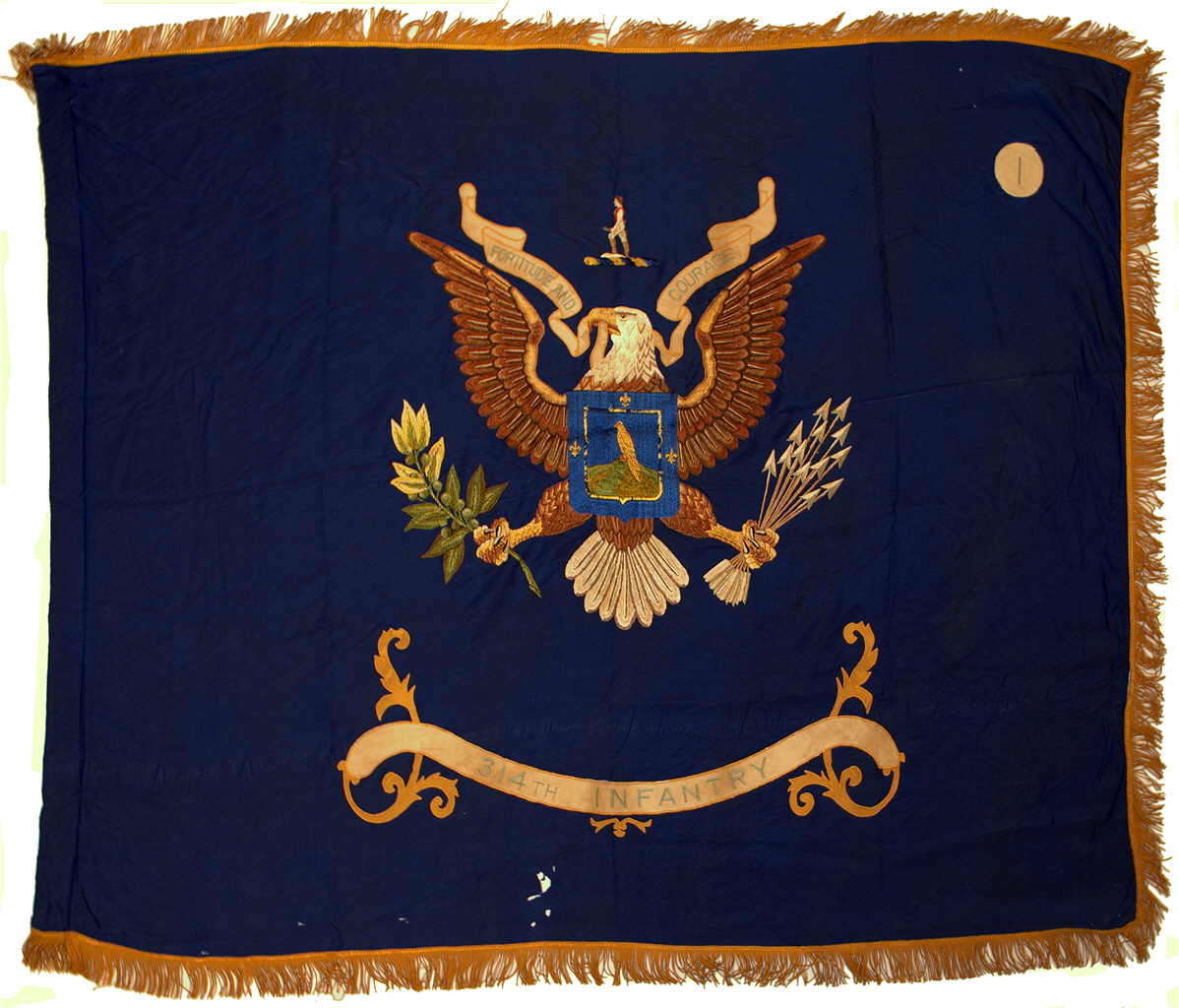 |
328th
Infantry
Regiment,
82nd
Infantry
Division
World War I |
1st
Battalion,
314th
Infantry
Regiment,
79th
Infantry
Division
World War II |
Unlike Army flags
which were made of
materials such as
silk and often
feature very
decorative elements
such as fringe and gilt
stars, Navy flags
more closely
resemble traditional
American flags used
commercially or for
home use. Navy
flags are often made
of wool, which is
more suitable to the
harsh briny, moist
conditions aboard a
ship.
The most common
indicators of a Navy
battle flag made for
use by
naval forces at sea
include:
- Fine quality
wool bunting
- The use of
13 stars in
specific
patterns:
4-5-4 patterns
in the pre-Civil
War and Civil
War period,
3-2-3-2-3 in the
Civil War period
through the
early 20th
century
- Markings on
the hoist, such
as Mare Island
or New York Navy
Yard
- Standard
sizes based on
Navy regulations
|
|

|
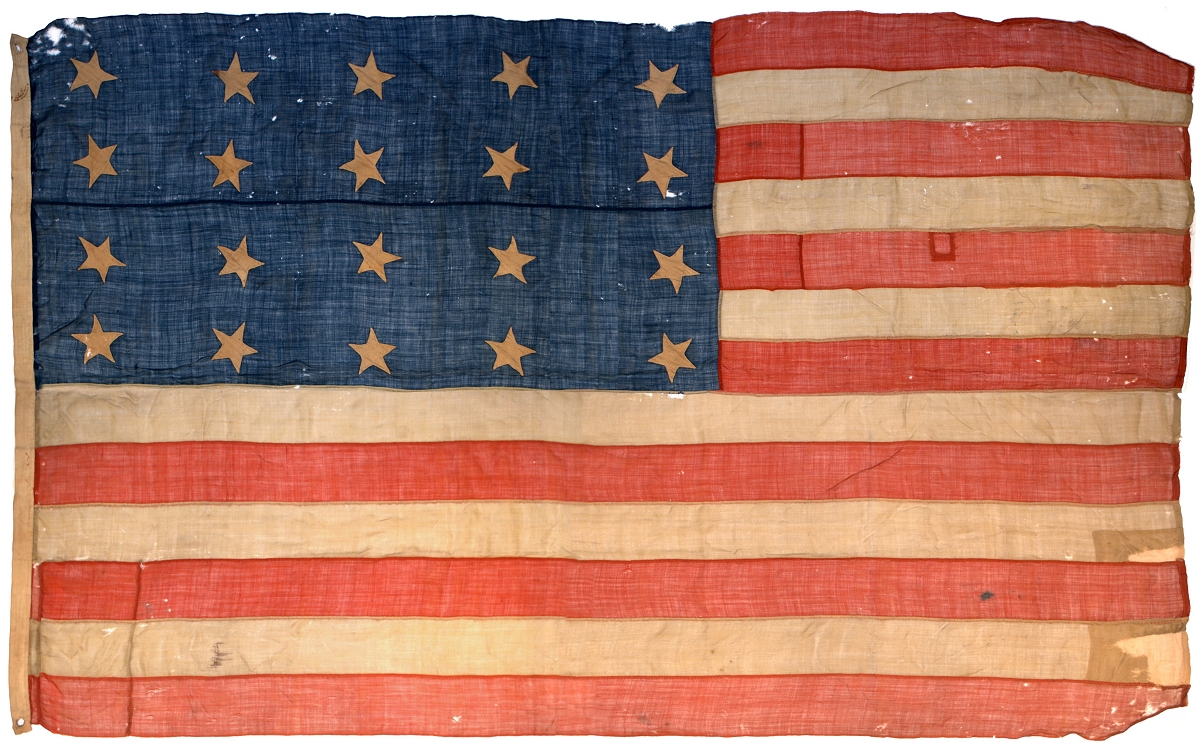 |
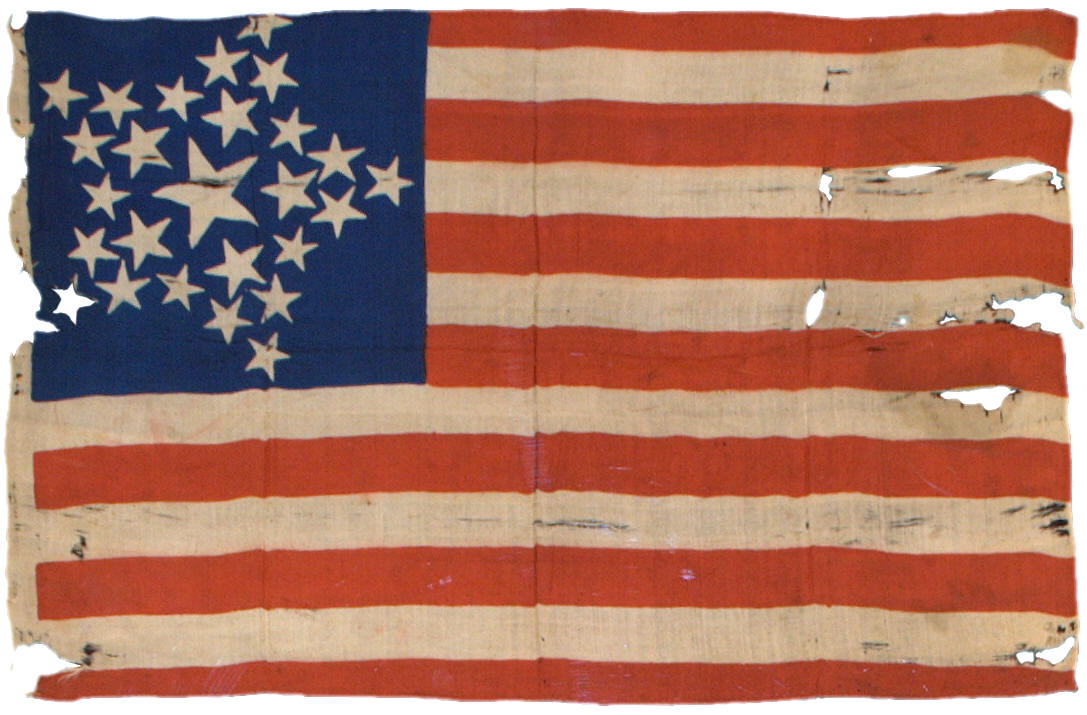 |
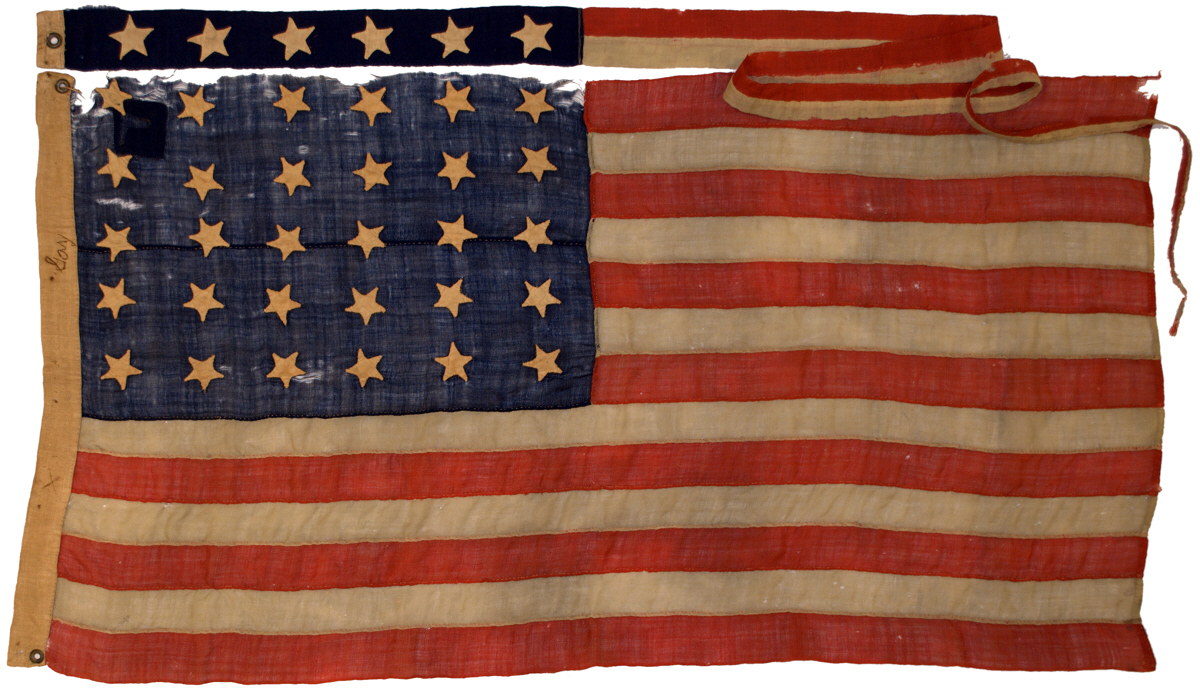 |
|
20 Stars
(2nd
Official
Pattern,
Late 1818) |
26 Stars,
Printed
Silk,
Navy Master
Samuel
Reid's Great
Star Pattern
Descended in
the Family
of
Commodore
Stephen
Decatur |
30 Stars
with
Commissioning
Pennant,
USS
Mississippi
|
| |
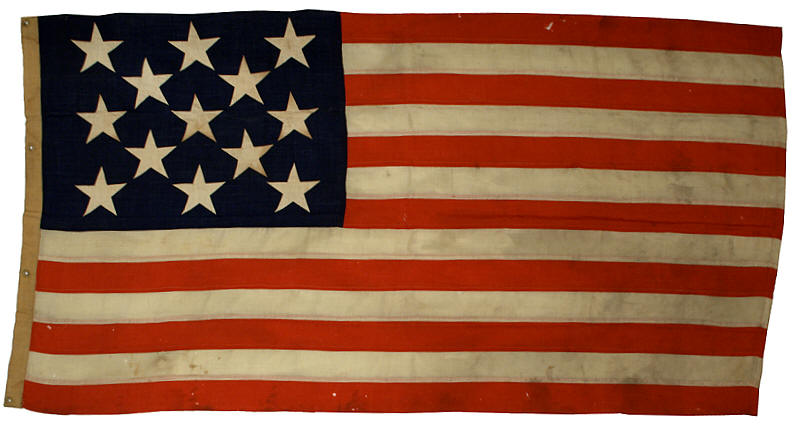 |
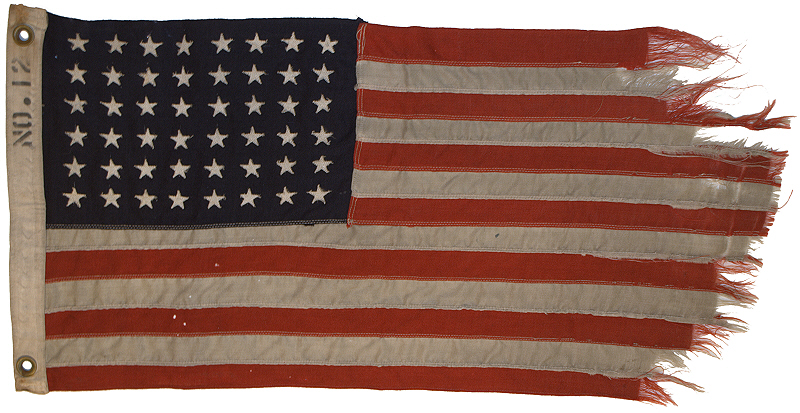 |
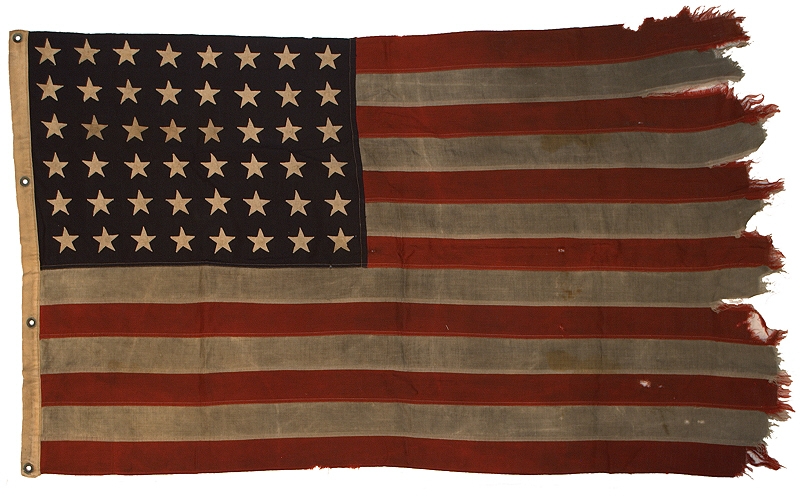 |
13 Stars,
New York
Navy Yard,
No. 7, 1904 |
48 Stars,
No. 12
USS PT-560
Battle Flag
World War II |
48 Stars,
Navy Battle
Flag,
World War II
to Cold War
Period |
|
|
|
 |
Next:
13 Star Flags |
|
 |
|
|

